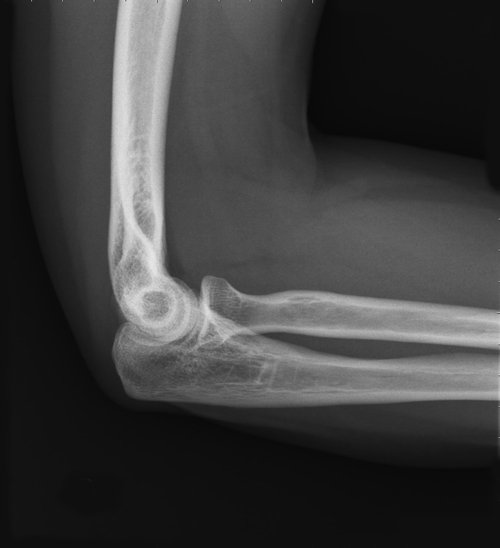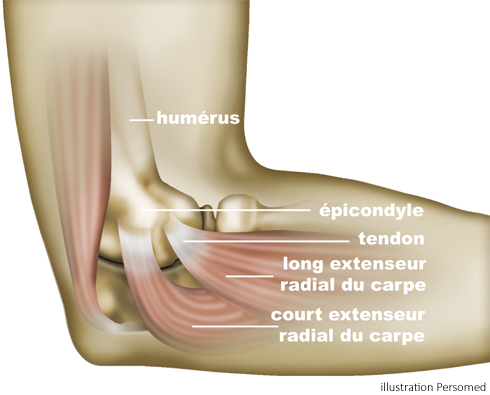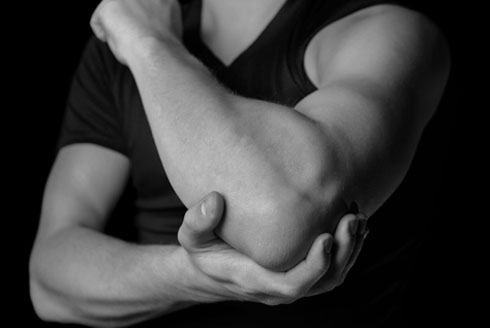The articulation of the elbow is formed by the joining of three bones : the humerus (upper arm bone), the ulna (forearm bone on the auricular side), and the radius (forearm bone on the thumb side).
- Humerus and ulna form a hinge for bending movements.
- Humerus and radius allow rotational movements

This articular complex unites four main muscle groups :
- Elbow flexors
- Elbow extender (the triceps)
- Lateral epicondyle muscles allowing the extension of the wrist and the fingers as well as the supination (palm up)
- Epitrochlear muscles allowing flexion of the wrist and fingers and pronation (palm down)

The median, radial and ulnar nerves pass through this narrow articulation to move towards the hand, they have a major role and make the surgery of the elbow particularly technical and delicate.


